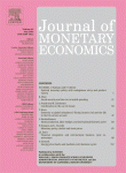Submitting your manuscriptThe Journal of Monetary Economics welcomes the submission of manuscripts in all areas of macroeconomics. To ensure the prompt processing of your manuscript, please follow these guidelines when submitting a new manuscript:
Decision categoriesThe JME's policy is to minimize the length of time that an author faces to get an ultimate decision on his/her manuscript, so focussing on time to rejection and time to publication. The number of resubmissions is only very rarely above two, and a high bar is set on the first round so that open ended-requests for a revision are avoided. The editors classify their decisions on manuscripts into six decision categories:
Submitting a revised manuscriptAt the JME, the first revision is a critical one, since second round submissions must be either rejected or accepted subject to a specified plan of further revisions. It is "up or out" for the resubmission of a manuscript after the first round. The author(s) should include the following items in their resubmission:
|
Editors
Borağan Aruoba Eric Swanson Associate Editors Klaus Adam David Argente Christiane Baumeister Jaroslav Borovicka Ryan Chahrour Davide Debortoli Luca Fornaro Adam Guren Kinda Hachem Cosmin Ilut Ethan Ilzetzki Anton Korinek André Kurmann Zheng Liu Frederic Malherbe Leonardo Melosi Andreas Mueller Pablo Ottonello Natalia Ramondo Felipe Saffie Benjamin Schoefer Eric Sims Luminita Stevens Johannes Wieland Jonathan Wright Fang Yang |
